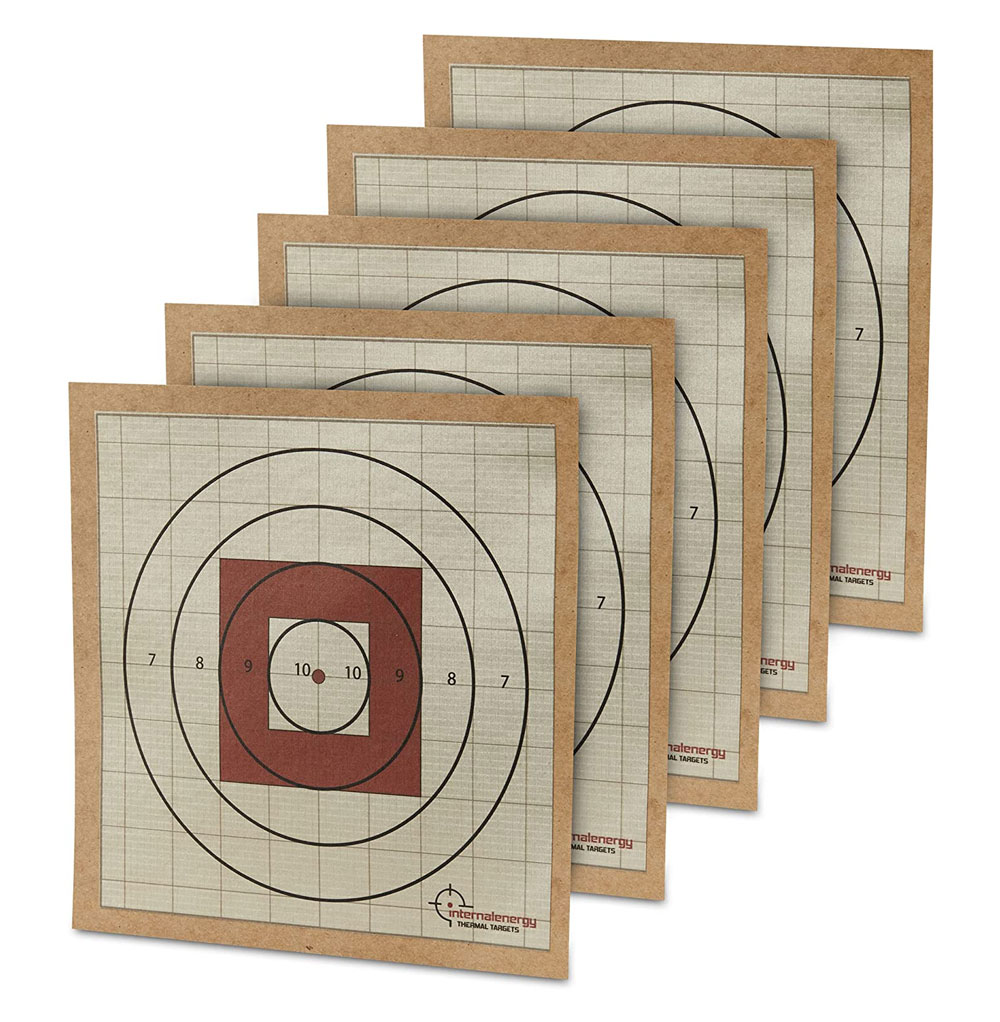As technology becomes ever more accessible to civilian shooters, thermal scopes have exploded in popularity and with good reason. Better than night vision optics, these heat-seeking eyes are great for nocturnal hunting as well as tactical work as they are useful for detecting animals through dense fog or thick bushes provided you know perfectly how to sight in a thermal scope.
Sighting in a thermal rifle scope is a process that involves aligning the barrel of the gun with the scope. When done properly, this will allow you to hit your target with ease. If not, you will likely never hit your target.
1. Stabilize your rifle
Before learning how to sight in a thermal scope, you first need to ensure that your weapon is steady, secure, and stable. If not, no matter how well your sight, you simply won’t ever be able to hit the targets.
Ensure you invest in the right suite of accessories to steady your rifle. If your hunting ground is secure, getting a good tripod or bipod is gonna be a great investment.
You can also use heavy bags and cement blocks. Once the rifle is stabilized, get yourself into a good, comfortable firing position.

For long-distance targets & hunting, we recommend the prone position as it is more stable, but a table setup will work as well.
Once you are guaranteed that you and your Rifle are secure, then you can effectively start aiming with your new thermal scope.
A stable weapon also ensures less recoil, reduced risk of injuries, and makes it easy to re-aim.
2. Choose the Target to hit
Choosing the right target is important if you want to accurately sight your thermal scopes. There are two ways to find a good target, you can either make them all by yourself or get dedicated targets from a local gun store or online stores like amazon.
And before you ask, your regular old paper targets are not gonna cut it here as you will be sighting mostly at night, and thermal scope isn’t the best for working with observable light.
Marking your target by heat is what thermal scoping is all about. The distinct the heat is from the surrounding areas, the easier it will be to aim.
If you are keen on making the targets yourself, you can use reflective tapes on hot water bottles to make an easy & effective target.

The taped crosshairs will make it easy to target with a reticle or a grid lens. You can also use heating pads that are available widely just for targeting or buy special thermal targets ideal for sighting or practicing with your thermal scope.
3. Fix Target Distance
As far as setting the targets go, the recommended distances are between 20 to 500 yards. It’s totally up to you to decide as even at closer ranges, you may end up hitting an inch above the reticle – in the field, this is enough to make you miss altogether. To get the best results, set a distance that matches your actual field of action and the scope you’re sighting.
Also, try to mix and match the target distances as often as possible to get a feel for them (this is crucial if you are into hunting or firing at moving targets).
Make sure you are using the same exact rounds for adjusting as well as targeting & hunting.
Bullet drops differ according to the bullet size, velocity, and caliber types. By using the same rounds for everything, you can get consistent results, always.
In fact, the same also goes for all your other gun accessories & components.
4. Fire a practice round
Once you get the target in place, your gun is secured & you’ve zeroed in with your optics, it’s time for you to start with a few practice rounds.
To make sure you’re getting the best output, set your target as if you’re on an actual hunting field.
Start by firing at least three rounds towards the target. Check where the bullets hit and calculate the vertical & horizontal distances by which you missed the center target.

Once written down, use that info to make the necessary adjustments (we’ll talk more about this in a minute) to your gun & thermal scope until you hit the target with absolute precision.
Keep in mind that these shots are not meant to hit the targets, rather it’s for you to learn how to hit the target.
5. Make necessary adjustments
When compared to normal sights, Thermal scopes tend to come with a lot more adjusting mechanisms to help fire with accuracy. Make sure to familiarize yourself & make full use of them as it can seriously improve your marksmanship.
When adjusting, always make sure to keep your firing patterns, distances & positioning habits as consistent as possible. This will make it easy to adjust efficiently for a bullseye hit. This is the importance of step 1 in securing your rifle as much as possible.
While making changes, avoid overdoing it on either side. Keep the adjustments incremental & precise and remember, you get plenty of chances to get it right, so no need to rush it. Make adjustments, then test them by shooting a few rounds. Rinse and repeat until you get it dead on.
Even if it’s for practice, make sure to do your best with every trigger press.
Also, each brand is different, and so are their adjustment procedures. Therefore, always refer to your respective brand manuals on how to make scoping changes.
6. Keep patient and keep practicing
Once you get the adjustments in order, try a practice shot. If you have done everything correctly, this should result in a clean bullseye.
If not, revisit those measurements & tune them until you can hit the marquee accurately every time. Sighting with a thermal optic is easy, but the hard part is to do it correctly.
Take as much time as you need, refresh the imaging as required, and strive for precision. Remember: slow is smooth and smooth is fast. Shooting is a skill.
To get better at it, keep on practicing & experimenting with targets at different distances.
Try using as few rounds as possible as practice shots, and if your shots have started hitting the dead center of your targets, now you know how to sight in a thermal scope correctly and ready to take on the field with confidence!
Why Thermal scopes are better for Precision Targeting
Unlike regular scopes which rely on light, Thermal scopes use infrared heat to track their targets. This itself makes thermal scoping superior in many counts, especially after the sun goes down.
All your targets will be highlighted as per their heat levels and will show up brighter against the cooler (and thus dimmer) backgrounds. This obviously makes it easy for you to aim, even under pitch darkness, fog, or behind bushes.
These are especially great for game hunting as it can easily detect the heat generated by animals and can see through crops & other greeneries. They are only handicapped by extreme cold, and even then it can sight with the faintest trace of heat.
If possible, get the help of a trained shooter who can train you to improve your sighting skills.
It’s a great way to learn from the best & also spruce up on your basics.

Researched and written by the American Gun Facts team. We are a group of Americans dedicated to providing factual information on firearms and fighting back against attempts to weaken or discard the Second Amendment. We write on topics ranging from firearm statistics, news, reviews, and more! AGF has been featured in the New York Times, NBC, MSN, Time, & many other publications.
